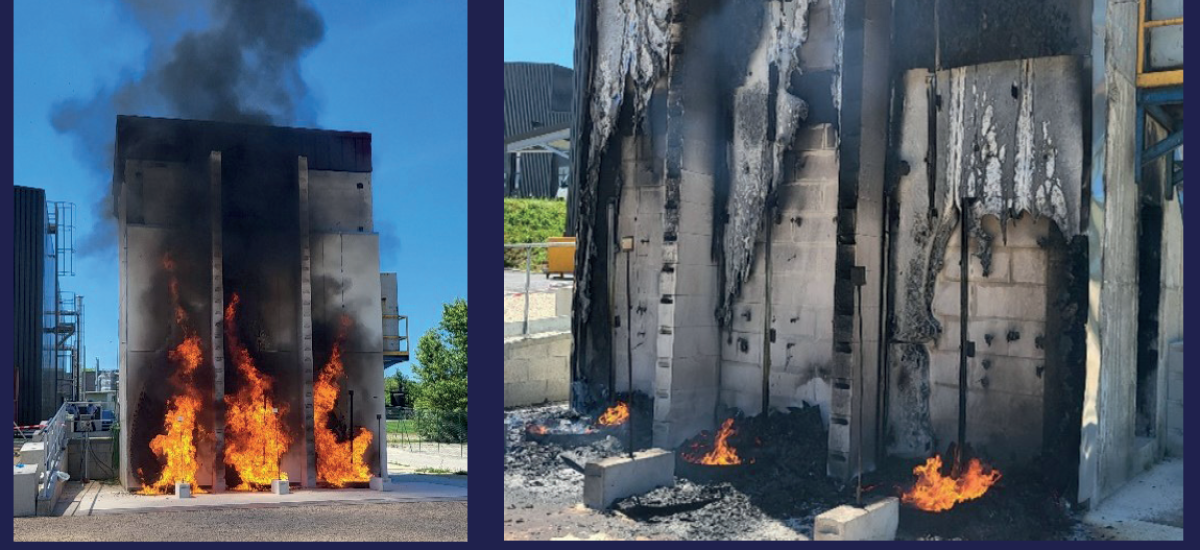22/8/2024
The French FRENETICS research project, which was completed in June 2024, was funded by the “Agence Nationale de la Recherche” under the contract ANR-19-CE22-0007.
This project aimed to carry out more detailed measurements during fire tests of facade systems, as well as to develop the scientific and technical knowledge needed to understand the fire safety of facades and to strengthen research on new low-flammability materials and safer systems.
As part of the project, several real-scale fire tests were carried out on a ventilated facade system using High Pressure Laminate (HPL) cladding with mineral wool used as insulation, chosen as representative of the classic systems used in France for building renovation. Ventilated rainscreen facade systems present a useful air gap between insulation and cladding, providing an efficient thermal regulation of the building. However, in the event of fire, this cavity may be a vector of fire propagation via the chimney effect, its width being a key factor in the fire behaviour of such facades.
This system was tested on a large scale (using the LEPIR2 facility structure) in order to quantify the influence of the air cavity thickness installed between the cladding and the insulant during fire development and propagation on the facade. Different air gaps were evaluated (40, 60, 80 and 120 mm). A specific instrumentation of the system and of the air layer was designed to allow evaluation of the flow characteristics in such systems. Additional thermocouples located both in gas and solid phases, together with a heat flux meter, plate thermometers and velocity probes, were installed during the test.
Two fire scenarios were evaluated. The first one represents an initial fire starting in a room and flowing out through a window opening, simulating a flashover in the compartment (see figure 1). This fire scenario was performed using the LEPIR2 facility, with standardized wood cribs located on the ground floor.
The second one considers an external fire, corresponding either to a vegetation fire or to potential combustible sources near the building (see figure 2). Pool fires of a representative size were placed in front of the LEPIR2 structure in order to investigate the behaviour of the ventilated facade system.
The results of the tests were presented at the Fire Safety of Facades (FSF) conference held in Lund, Sweden in June 2024. Tests have to be further analysed to verify the observed behaviour and influence of the cavity width. A numerical study to investigate the critical cavity conditions that validate the whole is planned.
For more information, please contact france@efectis.com

